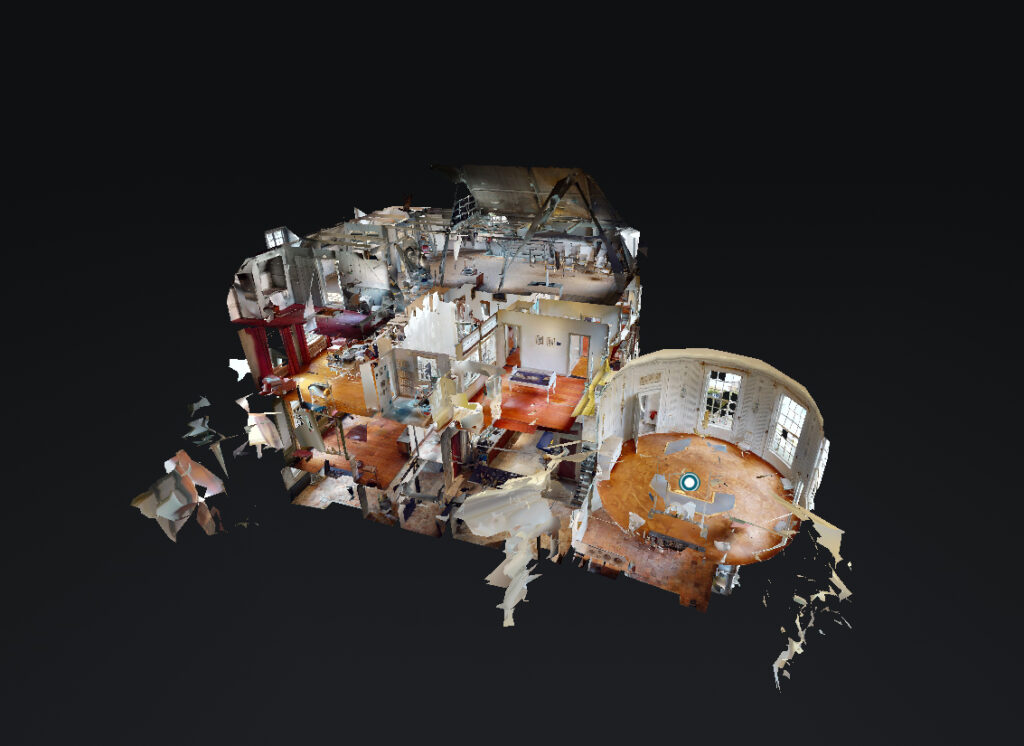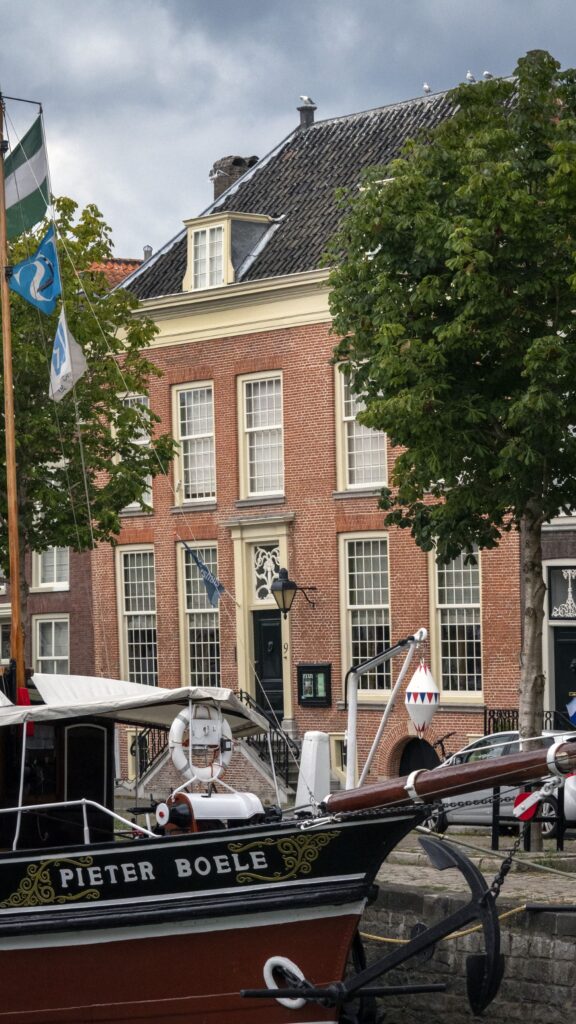Home
In the harbour area of the historic city centre of Dordrecht and along the banks of the Old Meuse lies the monumental premises no. 9 Wolwevershaven. Hidden behind the house front you find a unique late 18th century patrician residence with many original period features.
This intimate house museum gives you an impression of a Dordrecht Patrician household at the end of the 18th century. From cellar to attic you make a journey in time and you discover special and in particular original details, paintings and drawings.
For years on end this national monument was used as a private dwelling, but the last inhabitants have made the authentic residence and the extraordinary 18th century private collections accessible to the public.
Residents history
Who lived at no. 9 Wolwevershaven?
In 1609 the municipality of Dordrecht decides to excavate the Wolwevershaven. This creates a better flow whereby the Nieuwe Haven is no longer inaccessible. On both sides of the Wolwevershaven quays are constructed along which originally mainly industries settled. During a meeting of the Oudraad in 1645 it was decided to build houses on the quayside as well in order to boost the cloth industry.
New buildings in 1649
On 29th June 1649 Jacob Trip (son of Jacob Trip and Margaretha de Geer) buys a plot of land on the quay. Both on the father’s side and on the mother’s side this influential family is involved in the iron and weapons trade.
Two of Jacob’s brothers have given orders for the building of the famous ‘Trippenhuis’ in Amsterdam. That was then the largest residence in Amsterdam. Nowadays it is the home of the Academy of Science.
Widening the premises
In 1733 mr. J. Reepmaker combines the two adjoining premises which lends the outside of the building on the Wolwevershaven its current charm. Bridal couples regularly pose on the impressive steps for their wedding photos.
Annexe on the river side
At the end of the 18th century the residents are well aware of the unique location. In about 1780 mr. Pompejus Hoeufft gives the order for the construction of the Maas chamber (Maaskamer). This chamber has remained totally in the originally Louis XVI
style. The other rooms of the house are (in this period) also fitted out in this style.
The burgomaster’s residence
In the corridor six pegs pierce the wall. This is where the halberds of the servants hung who continuously followed the burgomaster. They are the silent witnesses from the time of burgomaster Anthonij van den Santheuvel. He resided there until 1793.

Layout of the house
When you enter the building the atmosphere is just as if the inhabitants have popped out for a little while to do some shopping. As soon as the front door swings open you imagine that you are in the house of a distinguished family. The head of the household holds a managerial position in the eighteenth century, namely that of burgomaster. In the roomy kitchen delicious meals are being prepared, while in the attic the washing is hanging out to dry on the drying rack.
Period rooms
Let yourself be astonished by the original period rooms during a walk through the mansion. In the front rooms you have a fine view over the attractive Wolwevershaven.
Walking through the long corridor you pass the homely kitchen. Then the dining room and the magnificent Maas chamber.
On the first floor visitors have access to two exhibition rooms.
You must also visit the authentic attic where the original drying racks hang and where the servants’ quarters found.
Kitchen
In the kitchen, which is full of character, you can relax with a cup of tea or coffee while you process the many impressions you have received. While sitting at the kitchen table you can admire the original tortoiseshell tiles behind the cooking area. In the recess there is a beautiful tile tableau to admire.
Collection
18th century paintings and drawings
The Dordrecht Patrician residence possesses a collection of paintings and drawings by Dordrecht painters who worked at the end of the 18th, beginning of the 19th century.. The chimney pieces in the front rooms by the Dordrecht artist Cornelis Kuipers are exceptional
Louis XVI furniture collection
The furnishing consists of a wide collection of furniture in Louis XVI-style and various utensils from that period. This style is named after the last king of France, Louis XVI (1754-1793).
For the final years of the eighteenth century Europe is involved in an economic decline. That has repercussions on the furniture styles. The flamboyant rococo is replaced by a more austere design: the Louis XVI-style.
18th century utensils
The museum has a large collection of eighteenth century utensils to complete the portrait of an era in the homely house museum.
Over het Dordts Patriciërshuis


In ons museum in Dordrecht ontdek je hoe welgestelde burgers leefden aan het einde van de 18e eeuw. De stijlkamers op de begane grond zijn ingericht in de stijl van Lodewijk XVI. De blikvanger van het museum is de ronde Maaskamer met uitzicht op het drukste drie-rivierenpunt van Europa.
In de sfeervolle kelder vinden vaak exposities van hedendaagse kunst plaats. In deze ruimte met haar historische balken en unieke doorkijkjes worden ook twee historische films vertoond, zodat geïnteresseerden in onze vaderlandse geschiedenis ook aan hun trekken komen.
Zoals valt terug te lezen in de vele positieve google reviews biedt ons museum in Dordrecht een “one stop shop” voor een leuke en leerzame middag waarbij ook iets te beleven valt voor uw (klein)kinderen! Terwijl u geniet van een gratis kopje koffie of thee vertellen onze gepassioneerde vrijwilligers u graag meer over dit bijzondere pand, dat tot voor kort nog als woonhuis in gebruik was.
Buiten openingstijden van het museum kunt u ook bij ons terecht voor trouwfoto’s, fotoshoots, vergaderingen en private dining.

